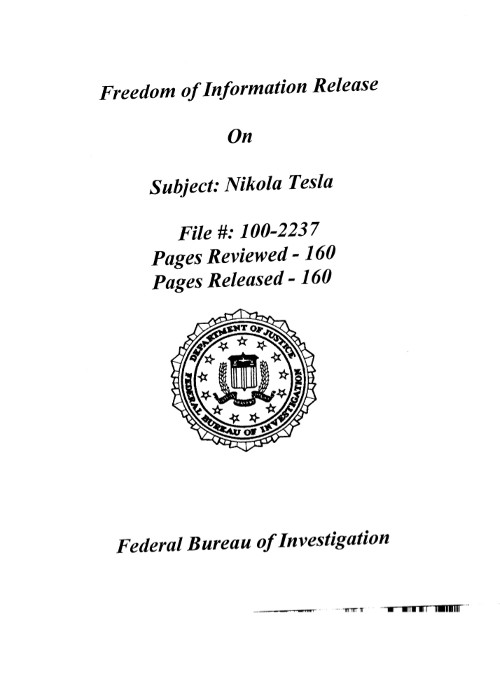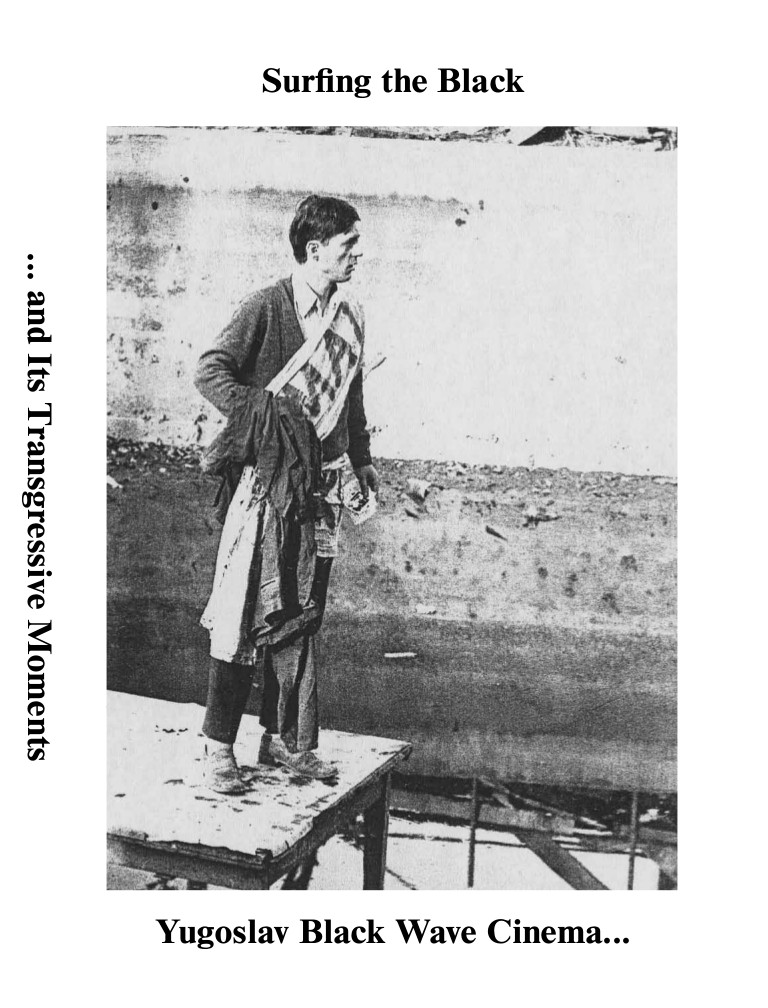FBI Files on Nikola Tesla (1940-1983)
Filed under records | Tags: · electricity, history, history of science, invention, marxism, politics, science, security, yugoslavia

Released through the Freedom of Information Act.
Publisher Federal Bureau of Information, undated
FBI Records: The Vault series
290 pages
publisher
Myth: The FBI has Nikola Tesla’s plans for a “death ray” (FBI: Top 10 Myths)
Gal Kirn, Dubravka Sekulić, Žiga Testen (eds.): Surfing the Black: Yugoslav Black Wave Cinema and Its Transgressive Moments (2012)
Filed under book | Tags: · 1960s, 1970s, cinema, film, film history, film theory, yugoslavia

The Yugoslav black wave cinema of the sixties and the seventies is one of the grand, though hidden, chapters of cinema history. Talented young authors, working under the sign of individual expression and aesthetic experimentation, pushed and explored the limits of the constraints of a socialist state. Their efforts lead to a new path of visual expression, so outstanding by its social and political engagement, its formal invention and its courage.
This book is the result of a multi-disciplinary research attempting to cross over politics, philosophy, design, art, architecture, and some speculative thinking. Starting from archival work, interviews, seminars, screenings and a conference, Surfing the Black has found its (temporary) conclusion in a publication consisting of six theoretical essays and three fanzines that open up the black wave film experience to current affairs. This is Yugoslavia, and modern cinema, at its blackest and brightest.
With six theoretical essays (by Boris Buden, Pavle Levi and Owen Hatherly, among others) and fanzines comprising an interview with one of the most important Yugoslav filmmakers, Želimir Žilnik, and a comprehensive glossary of terms that belong to the period and field of Yugoslav culture and politics, this is the first book on the subject in the English-speaking world.
With contributions by Sezgin Boynik, Boris Buden, Mladen Dolar, Owen Hatherly, Ana Janevski, Gal Kirn, Pavle Levi, Nicholas Matranga, Peter Rauch, Dubravka Sekulić, Žiga Testen and Samo Tomšič.
Edited by Gal Kirn, Dubravka Sekulić and Žiga Testen
Publisher Jan van Eyck Academie, Maastricht, The Netherlands
ISBN 9072076516, 9789072076472
216 pages
PDF (updated on 2012-9-4)
Comment (0)Armin Medosch: Automation, Cybernation and the Art of New Tendencies, 1961-1973 (2012)
Filed under thesis | Tags: · 1960s, 1970s, art, art history, computer art, computing, cybernetics, informational capitalism, media art, politics, technology, yugoslavia
“My research investigates exhibitions as sites of research and appraises the possibilities and contradictions of a progressive and socially engaged media art practice. The international art movement New Tendencies (NT) (1961-1973) provides the material evidence through its exhibitions, symposia, artworks, catalogues, newsletters and artist’s statements. The basic methodological assumption behind my research is that new insights are gained by questioning the various interdependencies between NT and historical change.
NT was searching for a synthesis between socialist emancipation and artistic modernism by proposing to replace the notion of art with visual research. The project emerged in Zagreb, capital of Croatia which was then part of Yugoslavia, a Socialist nation which did not belong to the Eastern bloc and experimented with market Socialism combined with social self-management and self-government. Yugoslavia’s unique role between the hegemonic power blocs made it possible that an international, humanistic, and progressive art movement could emerge from its territory.
With every exhibition and conference NT articulated its artistic position and set itself into relation with the respective techno-economic paradigm. NT began during the height of Fordism, continued during Fordism’s moment of crisis in 1968, and ended when a new paradigm – informational capitalism – started to develop from within the old one. In this historical context, my hypothesis is that NT’s exploration of participatory art stands in direct relation to the rise of automation and cybernation in society. A further layer of inquiry is the historically changing relationship between manual and intellectual labour and how art addresses it.
By contextualising NT my research contributes a new dimension to the history of media art. Through the chosen methodology, a new understanding is gained not only of this important art movement but of the general dynamics of media art in the second half of the 20th century.” (Abstract)
Doctoral thesis
Arts and Computational Technology, Goldsmiths, University of London
369 pages
PDF, PDF (updated on 2015-7-12)
Comment (0)
